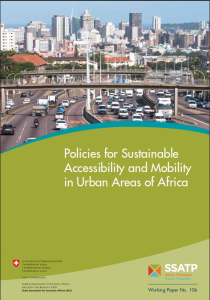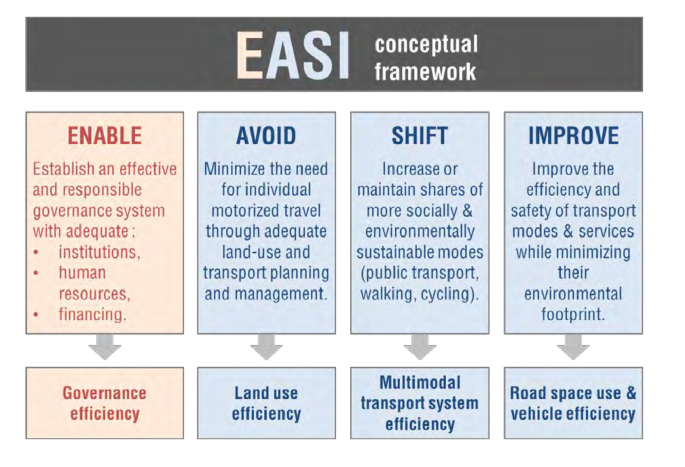[PUBLICATION] Policies for Sustainable Accessibility and Mobility in Urban Areas of Africa
 In
In
coming years, fast population growth and associated territorial expansion will be characteristic of African cities. As a result, authorities in the region will face important challenges in meeting urgent demands and future mobility and accessibility needs of urban dwellers. The new SSATP publication entitled “Policies for Sustainable Accessibility and Mobility in Urban Areas of Africa” – the result of a study conducted by Transitec, ODA, ACET, Urbaplan and CODATU – first presents a diagnostic of the current situation to then propose a set of policy recommendations seeking to encourage and enhance sustainable accessibility and mobility in urban areas of Africa.
The diagnostic was centred around three main subjects of analysis: urban transport governance, urban transport system (including services, infrastructure and public space) and transport system externalities. Analyses helped identify common obstacles to most African cities when seeking an improved and sustainable transport system: lack of integrated planning policies for land-use and transport, weak control of the transport system (albeit some positive trends can be observed), limited availability of scheduled institutional public transport services, infrastructural deficiencies (coupled with less than adequate infrastructure maintenance) and road safety problems. Even if important differences are observed between regions, countries and cities, current trends point to an acknowledgement of the need to reform and to improve the current state of urban transport. Indeed, projects aimed at introducing new mass transit services and initiatives to enhance governance of urban transport can be observed across the continent. Northern and Southern Africa present various cities that have now implemented such programmes, while, with few notable exceptions, West, Central and East African cities are often in planning stages of those programmes.
The document proposes a set of policy recommendations included in a conceptual framework for action. The “EASI” framework uses the “ASI” (Avoid-Shift-Improve) concept and adds a vital element to African transport systems: Enable. The latter is focused on the governance system while the rest relates to the transport system itself.
Policy recommendations have clear objectives:
First, in the ENABLE component (E), policy recommendations aim at establishing efficient and accountable governance systems that can anticipate needs, guide actions and ensure development and management of transport systems.
Second, in the AVOID component (A), the set of policy recommendations are designed to reduce or minimise the need for individual motorised travel by way of land-use and transport planning integration and management.
Third, in the SHIFT component (S), policy recommendations seek to encourage public transport and non-motorised travel.
And lastly, in the IMPROVE component(I), policy recommendations attempt to encourage and maintain efficiency and safety of all transport modes while minimising their environmental footprints.
In all, the EASI concept is conceived as a set of recommendations that will set African cities in the path to improved mobility, better accessibility and higher quality of life for all. It is also a concept that makes fast implementation possible.

